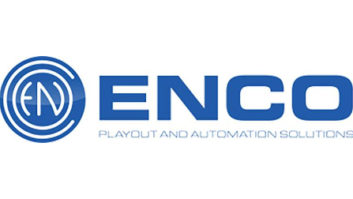AM DA Performance Verification CoalitionBroadcasters:
ABC/Disney
Beasely Broadcast Group Inc.
Bonneville International
Buckley Broadcasting
CBS Radio Inc.
Citadel Broadcasting Co.
Clear Channel Radio
Cox Radio Inc.
Crawford Broadcasting Co.
Cumulus Media Inc.
Entercom Communications Corp.
Entravision Communications Corp.
Family Stations Inc.
Journal Broadcast Group
Lincoln Financial Media
Morris Communications Co.
Multicultural Radio Broadcasting Inc.
Peak Broadcasting LLC
Regent Communications
Salem Communications Corp.
Consulting Engineers/Equipment Manufacturers:
Carl T. Jones Corp.
Cavell, Mertz & Associates Inc.
Communications Technologies Inc.
du Triel, Lundin & Rackley Inc.
Hammett & Edison Inc.
Hatfield & Dawson Consulting Engineers
Khanna & Guill Inc.
Radiotechniques Manufacturing
Sellmeyer Engineering
Proposed Changes
Here’s a synopsis of the coalition’s proposed rule changes.
1. Section 73.151: DA Performance Verification
The option of using computer modeling via Method of Moments (MoM) coupled with the use of calibrated and conforming sampling systems is being added to the existing rule and prescribed method of field strength proof of performance measurement verification. The specifics of the MoM program to be used are not identified, but presumably it would be done with NEC or with MININEC-4, an evolved program inspired by NEC using different algorithms that can run on a PC.
2. Section 73.155: Periodic DA Performance Recertification
If an AM station chooses computer modeling and maintenance of parameters derived from that method, it shall certify performance compliance once every 24 months in writing and retain the certifying document in the Public File. Such certification involves the independent re-measurement of sampling lines and devices to confirm they still perform to the manufacturer’s specs.
3. Section 73.61: AM DA Field Strength Measurements
Whenever there may be indications that an AM station’s DA is not operating as authorized (typically as the result of FCC inspection), the FCC may require that station to conduct either a partial field proof pursuant to 73.154, or a full proof using MoM modeling and sample system verification pursuant to (revised) 73.151.
4. Disturbance to AM antenna patterns by construction or alteration of nearby structures that generate RF energy:
The coalition says the disparate treatment of such cases found in sections 22.371, 27.63 and 73.1692 would be replaced with a new rule in Part 17 with new language covering realistic scenarios. FCC licensees in any service and ultimately any user of an RF device that emits energy causing pattern disturbance would be required to employ detuning or other means as necessary to resolve such disturbance.
WASHINGTON A rulemaking request to modify the means of verifying AM directional antenna performance could be “fast-tracked” at the FCC thanks to the overwhelming support of large AM broadcasters.
A coalition of broadcasters, equipment manufacturers and consulting engineers is seeking approval to use modern computerized methods of AM antenna pattern prediction modeling known as Method-of-Moments (MoM) computer modeling.
The proposed modifications were filed to MM Docket No. 93-177, “An Inquiry Into the Commission’s Policies and Rules Regarding AM Radio Service Directional Antenna Performance Verification.” The coalition asks that computer modeling and internal array monitoring be relied on to proof and maintain most medium-wave antenna systems, rather than the current method of magnetic field strength measurements.
Proponents say AM broadcasters will benefit from long-overdue changes by making it easier for existing stations to stay in compliance with FCC rules and allowing broadcasters to upgrade facilities more easily.
Less cost, less time
“There is too much ambiguity with the current set of rules governing AM antenna verification,” said Raymond Benedict, CBS Radio director of spectrum management, speaking on behalf of the coalition.
“Computer modeling offers many benefits, including the ability to more accurately predict the relationship between pattern shape and internal array parameters such as impedances, voltages and currents. It will be less expensive and less time-consuming.”
The computer modeling, which uses Numerical Electromagnetic Code-4 or MININEC, has increasingly become more reliable and cost-effective with more broadcast engineers and consultants relying on it for design and implementation of antenna systems of all types, supporters say.
According to the filing, “Computer modeling does not rely on the oversimplified assumptions contained in the FCC’s current rules and therefore can be relied on to predict accurately.”
The coalition, called the AM Directional Antenna Performance Verification Coalition, began meeting last fall to examine directional antenna modeling and follow through on a Further Notice of Proposed Rulemaking the FCC issued in 2001 when the commission last overhauled AM antenna proof rules (RW, Feb. 1). The coalition has the support of Clear Channel Radio, Citadel Broadcasting Company, Cox Radio Inc. and many other major broadcast groups.
“The support is there. The timing is right. The industry and even the FCC have been using MoM to verify antennas for some time now. They appear to have grown more comfortable with the technology,” Benedict said.
MoM has become more widely accepted as a means to proof AM directional antenna systems worldwide, while radial field measurements often are found to be unreliable because of terrain, seasonal and construction effects, said Ben Dawson, president of Hatfield & Dawson Consulting Engineers.
“It’s been obvious to many that computer modeling is really the most scientifically accurate way of determining the performance of antenna arrays as distinguished from the environment,” Dawson said. “Specifically, today’s urban settings can leave a broadcaster with undesirable effects on field strength readings. Computer modeling can better predict effects of terrain.”
Minus a very pristine environment in a rural area, magnetic field strength measurements a very imprecise, Dawson added.
‘A better way’
“We have a group of licensees who finally realized that in order to manage the complexity and cost of managing and maintaining directional AM antennas in a modern urban environment there needed to be a better way,” Dawson said.
The group’s proposed rules and rule modifications would require broadcasters to submit proof of performance using Method-of-Moments modeling and internal array parameters to re-certify the performance of their directional antenna pattern once every 24-month period.
The request also addresses broadcasters’ needs to evaluate the effects of reradiating, resulting from construction near an AM antenna system. Benedict specifically mentioned cellular towers as an area of concern.
“We are working with the cell tower industry to standardize the expectations and eliminate a growing concern for broadcasters,” Benedict said. “These changes could save broadcasters tens of thousands of dollars and reduce interference in the AM band.”
The FCC declined to comment about the rulemaking. However, Benedict and others believe this particular rule request will be “fast-tracked.”
“I may be overly optimistic, but I believe it is possible for the commission to issue a rulemaking as early as this fall sometime,” said Benedict, who along with Dawson and others worked on the wording of the proposed modifications.
“The commission will likely act with expediency. (Computer modeling) benefits them because it streamlines the processing process. It will take less staff time to evaluate proof of performance. It should take less time to evaluate the data than typical magnetic field measurements,” Dawson said.
Even if the new rules are adopted, the FCC could come back to a broadcaster and ask for magnetic field measurements to determine directional antenna performance, Dawson added.
Opposition to the AM directional antenna rules and modifications appears to be minimal, said Dawson. If there is any opposition, public comments presumably would be filed to the FCC in this docket.
“But like all administrative processes it is not an entirely technical process. It is a political one as well,” he said. Neither Benedict nor Dawson would speculate which groups or industries, if any, could be opposed to the coalition’s request.
The coalition has asked the FCC to release the proposed rules and modifications for public comment in connection with the Further Notice. The public comment is followed by a 30-day reply comment period before the FCC can issue any official rulemaking.











